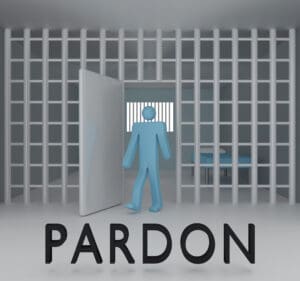In the ever-evolving landscape of legal marketing, law firms are constantly seeking innovative ways to stand out from the competition and attract new clients. One approach that has gained significant traction in recent years is proactive public relations (PR), which offers a fresh perspective on how legal professionals can enhance their visibility and reputation. Unlike traditional legal marketing strategies, proactive PR focuses on building relationships, establishing thought leadership, and creating a positive narrative around a law firm or attorney. This article will explore the key differences between proactive PR and traditional legal marketing strategies, and how law firms can leverage both approaches to maximize their marketing efforts.
Proactive PR is a strategic approach to communication that aims to shape public perception and build positive relationships with key stakeholders before issues or crises arise. In the legal industry, this means taking a proactive stance in managing a firm’s reputation, sharing expertise, and engaging with the media and target audiences. On the other hand, traditional legal marketing strategies often focus on more direct promotional activities, such as advertising, direct mail campaigns, and website optimization.
One of the primary differences between proactive PR and traditional legal marketing lies in the approach to communication. Traditional marketing typically involves pushing messages out to potential clients through various channels, often with a clear sales or promotional intent. This might include running advertisements in legal publications, sending out newsletters highlighting recent case wins, or creating brochures that outline the firm’s services.
In contrast, proactive PR takes a more subtle and relationship-focused approach. Instead of directly promoting services, proactive PR aims to position attorneys and law firms as trusted experts and thought leaders in their respective practice areas. This is achieved through various tactics, such as:
- Media relations: Cultivating relationships with journalists and offering expert commentary on legal issues relevant to the firm’s practice areas.
- Thought leadership: Producing and distributing high-quality content, such as articles, whitepapers, and blog posts, that showcase the firm’s expertise and insights.
- Speaking engagements: Securing opportunities for attorneys to speak at industry conferences, seminars, and other events to share their knowledge and build credibility.
- Community engagement: Participating in local events, sponsoring charitable causes, and engaging in pro bono work to demonstrate the firm’s commitment to social responsibility.
- Crisis management: Developing strategies to address potential issues or crises before they occur, ensuring the firm is prepared to respond effectively if needed.
By focusing on these proactive PR strategies, law firms can build a strong reputation and establish themselves as go-to resources for legal expertise. This approach can be particularly effective in today’s digital age, where potential clients often research firms and attorneys online before making a decision.
Another key difference between proactive PR and traditional legal marketing is the emphasis on storytelling and narrative building. Traditional marketing often relies on highlighting a firm’s credentials, case results, and services offered. While this information is important, it may not resonate as deeply with potential clients who are looking for a more personal connection with their legal representation.
Proactive PR, on the other hand, focuses on crafting compelling narratives that showcase the firm’s values, culture, and impact on clients and the community. This might involve sharing client success stories, highlighting the firm’s pro bono work, or discussing how the firm’s attorneys are addressing important legal issues affecting their community. By telling these stories, law firms can create a more emotional connection with their target audience and differentiate themselves from competitors.
One example of effective proactive PR in the legal industry is the use of thought leadership content. Many law firms are now investing in creating high-quality, informative content that addresses common legal issues or provides insights into emerging trends in various practice areas. This content can take many forms, including:
- Blog posts and articles on the firm’s website
- Guest contributions to legal publications and industry journals
- Whitepapers and e-books on complex legal topics
- Podcasts or video series featuring attorneys discussing legal issues
- Infographics that break down complex legal concepts into easily digestible visuals
By consistently producing and sharing this type of content, law firms can position themselves as trusted sources of information and expertise. This approach not only helps to attract potential clients but also builds credibility with other professionals in the legal industry, potentially leading to referrals and collaboration opportunities.
Another area where proactive PR differs from traditional legal marketing is in its approach to media relations. Traditional marketing might involve placing paid advertisements in legal publications or sending out press releases about firm achievements. While these tactics can be effective, they often lack the personal touch and credibility that comes from building relationships with journalists and media outlets.
Proactive PR focuses on cultivating relationships with reporters, editors, and producers who cover legal issues relevant to the firm’s practice areas. This might involve:
- Offering attorneys as expert sources for news stories and feature articles
- Pitching story ideas that align with the firm’s areas of expertise
- Providing timely commentary on breaking legal news or emerging trends
- Hosting media events or roundtable discussions on important legal issues
- Developing a rapid response strategy to quickly provide expert opinions on relevant news stories
By taking this approach, law firms can increase their chances of earning positive media coverage and establishing their attorneys as go-to experts in their respective fields. This earned media coverage often carries more weight with potential clients than paid advertising, as it is seen as more objective and credible.
Social media is another area where proactive PR and traditional legal marketing strategies diverge. While traditional marketing might focus on using social media platforms primarily for promotional purposes, proactive PR takes a more engagement-focused approach. This might include:
- Sharing thought leadership content and industry insights
- Engaging in conversations with followers and other industry professionals
- Highlighting firm culture and community involvement
- Providing real-time updates on important legal developments
- Showcasing attorney personalities and expertise through personal branding efforts
By using social media as a tool for engagement and relationship-building rather than just promotion, law firms can create a more authentic and approachable online presence. This can be particularly effective in attracting younger clients who are more likely to research and engage with firms through social media platforms.
Another key aspect of proactive PR that sets it apart from traditional legal marketing is its focus on crisis management and reputation protection. While traditional marketing strategies might primarily focus on promoting positive aspects of a firm, proactive PR also involves preparing for potential issues or crises that could damage the firm’s reputation.
This might include:
- Developing crisis communication plans for various scenarios
- Training attorneys and staff on how to handle media inquiries during a crisis
- Monitoring online mentions and reviews of the firm to quickly address any negative feedback
- Building relationships with key stakeholders who can serve as allies during a crisis
- Regularly assessing and addressing potential reputational risks
By taking a proactive approach to crisis management, law firms can be better prepared to handle unexpected challenges and protect their reputation in the long term.
While proactive PR offers many benefits, it’s important to note that it should not completely replace traditional legal marketing strategies. Instead, the most effective approach is often a combination of both proactive PR and traditional marketing tactics. This integrated approach allows law firms to leverage the strengths of both strategies to create a comprehensive marketing plan.
For example, a law firm might use traditional marketing tactics such as search engine optimization (SEO) and pay-per-click (PPC) advertising to improve its online visibility and attract potential clients who are actively searching for legal services. At the same time, the firm could implement proactive PR strategies such as thought leadership content creation and media relations to build credibility and establish its attorneys as trusted experts in their fields.
By combining these approaches, law firms can create a multi-faceted marketing strategy that addresses both short-term lead generation goals and long-term reputation building objectives.
One area where proactive PR and traditional legal marketing can work together effectively is in the realm of content marketing. While content creation is often associated with proactive PR efforts, it can also serve traditional marketing goals when properly optimized and distributed. For example:
- Blog posts and articles can be optimized for search engines to improve the firm’s organic search rankings
- Thought leadership content can be repurposed for use in email marketing campaigns
- Video content created for PR purposes can be used in targeted social media advertising campaigns
- Whitepapers and e-books can serve as lead magnets to capture potential client information
- Infographics can be shared across social media platforms to increase engagement and brand awareness
By taking this integrated approach to content creation and distribution, law firms can maximize the impact of their marketing efforts and reach a wider audience.
Another important consideration when comparing proactive PR to traditional legal marketing is the measurement of success. Traditional marketing strategies often focus on metrics such as website traffic, lead generation, and conversion rates. While these metrics are important, they may not fully capture the long-term value of proactive PR efforts.
Proactive PR success metrics might include:
- Media mentions and positive press coverage
- Increases in brand sentiment and reputation scores
- Growth in social media followers and engagement rates
- Invitations to speak at industry events or contribute to publications
- Improvements in employee satisfaction and retention rates
By tracking both traditional marketing metrics and PR-specific metrics, law firms can gain a more comprehensive understanding of their overall marketing performance and the impact of their proactive PR efforts.
One of the challenges that law firms may face when implementing proactive PR strategies is the time and resource investment required. Unlike some traditional marketing tactics that can be automated or outsourced, many proactive PR activities require ongoing effort and personal involvement from attorneys and firm leadership. This might include:
- Regularly writing thought leadership articles and blog posts
- Participating in media interviews and providing expert commentary
- Attending industry events and networking with potential clients and referral sources
- Engaging with followers on social media platforms
- Collaborating with the PR team to develop and implement communication strategies
While this time investment can be significant, the long-term benefits of building strong relationships and establishing a positive reputation often outweigh the costs. Law firms that are committed to proactive PR should consider allocating dedicated resources to these efforts, whether through in-house PR professionals or by partnering with external PR agencies that specialize in legal industry communications.
As the legal industry continues to evolve, proactive PR strategies are likely to become increasingly important for law firms looking to differentiate themselves in a crowded market. Some emerging trends in legal PR that firms should be aware of include:
- Influencer partnerships: Collaborating with legal industry influencers or thought leaders to expand reach and credibility.
- Virtual events and webinars: Hosting online events to showcase expertise and engage with potential clients and referral sources.
- Data-driven storytelling: Using data and analytics to create compelling narratives about legal trends and firm performance.
- Purpose-driven communications: Highlighting the firm’s commitment to social responsibility, diversity and inclusion, and other important values.
- Personalized content experiences: Leveraging technology to deliver tailored content to specific audience segments based on their interests and needs.
By staying ahead of these trends and continually adapting their PR strategies, law firms can maintain a competitive edge and build lasting relationships with their target audiences.
In conclusion, while traditional legal marketing strategies remain important for attracting clients and promoting services, proactive PR offers a complementary approach that focuses on building relationships, establishing thought leadership, and creating a positive narrative around a law firm or attorney. By combining both approaches and tailoring their strategies to their specific goals and target audiences, law firms can create a comprehensive marketing plan that drives both short-term results and long-term success.
As the legal industry continues to evolve and become more competitive, those firms that embrace proactive PR alongside traditional marketing tactics will be best positioned to thrive in the years to come. By investing in relationship-building, thought leadership, and strategic communication, law firms can differentiate themselves from competitors, attract high-value clients, and build a strong, resilient reputation that will serve them well in both good times and challenging periods.
Sources:
- https://www.vixmediagroup.com/resources/5-pivotal-marketing-trends-for-law-firms-in-2024
- https://good2bsocial.com/top-6-legal-marketing-trends-of-2023/
- https://www.furiarubel.com/news-resources/everyday-public-relations-lawyers-primer/
- https://www.nomosmarketing.com/post/legal-marketing-trends-to-look-out-for-in-2024
- https://www.jaffepr.com/insights/legal-marketing-trends-2024





















